World
What’s Happening In Myanmar’s Civil War?

Myanmar’s military staged a coup in 2021, strangling democratic reforms and jailing much of the country’s civilian leadership. Three years on, the Southeast Asian nation is teetering on the brink of failed statehood. Insurgent groups, including pro-democracy forces and ethnic militias, are battling the junta’s soldiers. Tens of thousands of people have been killed, and millions more are displaced.
Source: Special Advisory Council for Myanmar (SAC-M)
The resistance now controls more than half of Myanmar’s territory
The fighting, in forests and towns across Myanmar, gets little of the international attention claimed by the conflicts in Ukraine and Gaza. Yet a decade ago, this nation wedged between India and China was touted as a rare example of a country peacefully transitioning from military dictatorship toward democratic rule. The army putsch ended any illusion of political progress. Myanmar has returned to a military reign of terror and the fractured reality of civil war. The lawlessness that thrives in conflict areas has radiated outward, with transnational crime networks using Myanmar as a base and exporting the products of their illicit activity worldwide.
Soldiers from 8th Battalion of the Karenni Nationalities Defense Force, an armed insurgent group, during their graduation ceremony in Karenni State in February.
Adam Ferguson for The New York Times
Why is there a civil war in Myanmar?
The short answer: The military coup was met by widespread peaceful protests. Then the junta, led by Senior Gen. Min Aung Hlaing, quickly reverted to its old playbook: jail, terrorize, kill.
Pro-democracy forces took up arms, joining with militias that for decades had been fighting for the rights of ethnic minorities.
The longer answer: Myanmar has been in turmoil practically since gaining independence from British rule in 1948. Some of the world’s longest-running armed conflicts have simmered in the country’s borderlands, where ethnic militias are seeking autonomy or simply freedom from the Myanmar military’s repression.
A brief period of political reform, with a civilian government led by Daw Aung San Suu Kyi, the Nobel laureate, did not make life much better for many ethnic minorities. After her political party trounced the military-linked party in Myanmar’s 2020 elections, a junta grabbed full control of the country again.
Myanmar’s decades of political turmoil
A common goal of overthrowing the junta has led to unity between pro-democracy militias and armed ethnic groups. Together, these resistance forces have claimed significant territory from the Myanmar military. On April 11, they captured a key border town from the junta’s forces, their biggest victory yet.
Who exactly is fighting the Myanmar military? 
Hundreds of pro-democracy militias, ethnic armies and local defense forces. The sheer diversity of resistance groups battling the junta makes Myanmar the most fractured country on Earth, according to the Armed Conflict Location and Event Data Project, which tracks 50 high-level conflicts worldwide. Complicating matters, some of the rebel groups fight one another, too.
More than 20 militias representing various ethnic minorities have been fighting for autonomy for decades. Some of these insurgent groups control territory in Myanmar’s resource-rich periphery.
Ethnic militias exert control in different parts of Myanmar
When ousted politicians and democracy advocates fled arrest after the coup, they found sanctuary in these ethnic rebel-held areas and formed a shadow authority called the National Unity Government.
Tens of thousands of young people — among them doctors, actors, lawyers, teachers, models, Buddhist monks, D.J.s and engineers — escaped from the junta-held cities and formed more than 200 People’s Defense Forces, pledging allegiance to the shadow government.
Often trained by the ethnic militias, the P.D.F. is now fighting in more than 100 townships across the country.
Source: Myanmar Peace Monitor
Hundreds of militias groups make up the People’s Defense Forces
How successful have the rebels been? 
Since an alliance of three ethnic armies, backed by the P.D.F., began an offensive on Oct. 27, the resistance has gained significant ground. Rebels now control much of Myanmar’s border region, including a strategic trading town that was captured on April 11. A few days later, they fired rockets at the nation’s top military academy. Some of the fighting is taking place within striking distance of Naypyidaw, the bunkered capital that the generals built early this century.
This year could be a turning point in Myanmar’s war, military analysts say. With each week, the junta’s forces abandon more outposts. Myanmar’s military is overstretched and underprovisioned. Even at the best of times, its biggest asset has been numbers, not expertise. In February, the military brought in a draft, signaling its desperation for fresh recruits.
Resistance soldiers riding in the back of a pickup truck in southern Karenni State in January.
Adam Ferguson for The New York Times
How are civilians affected? 
The Armed Conflict Location and Event Data Project says that the war in Myanmar is the most violent of the 50 conflicts it tracks. Since the coup, at least 50,000 people have been killed there, including at least 8,000 civilians, the group says.
Note: Data as of March 15
Source: The Armed Conflict Location and Event Data Project
The military’s deadly attacks against civilians
More than 26,500 people have been detained for opposing the junta, according to the Assistance Association for Political Prisoners (Burma), a rights group.
Myanmar’s military has bombarded the country with airstrikes on over 900 days since the coup, according to the Myanmar Peace Monitor, an exile group that tracks the war. Since the rebels’ October offensive, there has been a fivefold increase in aerial bombardment, according to Tom Andrews, the United Nations Special Rapporteur for human rights in Myanmar.
By the end of last year, more than 2.6 million people had been driven from their homes in a country of about 55 million, according to the United Nations human rights office. Nearly 600,000 of those internally displaced people fled after the fighting intensified in October. More than 18 million people are in desperate need of humanitarian assistance, according to the United Nations, which says that a million had required such aid before the coup.
Source: Myanmar Peace Monitor Note: Data as of April 2
Each month, hundreds of thousands of people are displaced by the fighting
United Nations investigators say that the junta’s forces should be investigated for war crimes and crimes against humanity, and they cite reports of organized sexual violence, village burnings and the indiscriminate use of landmines. Such abuses predate the coup. In 2017, the military conducted what the United States says was a genocidal campaign against the Rohingya Muslim minority.
Who lives in the country? 
Myanmar is an extraordinarily diverse nation whose borders were shaped by British imperialism rather than ethnic boundaries. Officially, 135 ethnic groups live in the country, and practically the only thing they agree on is that this figure is wrong.
Note: The Karenni are also known as the Kayah, the Karen as the Kayin, the Rakhine as the Arakan, and the Ta’ang as the Palaung. Source: General Administration Department, Myanmar
Myanmar has extraordinary ethnic diversity
Some ethnic minorities have more in common with people in China, India and Thailand than with the Bamar, Myanmar’s largest ethnicity. Others come from princely states that were not under the full authority of a central administration until the middle of the last century. Still others, such as over a million Rohingya, have been rendered stateless because the military refuses to recognize them as rightful inhabitants of the country.
What Myanmar’s ethnic minorities, particularly non-Buddhist ones, share is a long record of persecution by the military.
Myanmar’s ethnic diversity is concentrated in the foothills of the Himalayas and the forested border regions that cradle the delta and lowlands through which the Irrawaddy River flows.
Is it Myanmar or Burma? 
It’s both.
In 1948, the Union of Burma declared independence from British rule. In the Burmese language, the root of the words Burma and Myanmar are the same. In 1989, a year after the violent crushing of a pro-democracy movement, a junta renamed the country internationally as Myanmar, the name by which it is known locally. The generals argued that Myanmar was a more inclusive name, because it was not so explicitly linked to the nation’s Bamar ethnic majority.
Nevertheless, the pro-democracy front, led by Ms. Aung San Suu Kyi, tended to refer to the country as Burma to show opposition to the military regime. Ethnic minority groups often called the country Burma when speaking English. The United States still officially calls the country Burma, but most foreign governments use Myanmar. After the 2021 coup, some exiled politicians and other pro-democracy activists who once called it Myanmar switched to Burma with an international audience.
Most people, however, still refer to Myanmar.
There is no commonly accepted word for the inhabitants of the country. Some refer to the Burmese of Myanmar, which seems a usage at cross-purposes. In Myanmar, the citizens are generally referred to as Myanmar, the word serving as both a nation and a nationality.
Will Myanmar hold together? 
Three years after the coup, the center of Myanmar remains mostly under junta control, but the rest of the country is a kaleidoscopic array of competing influences, fiefs, democratic havens and drug-lord hideouts. Ethnic armed groups govern some areas. Administrators aligned with the National Unity Government have set up schools and clinics in others. No one is in charge in still other parts of the country, leaving residents lacking basic services and vulnerable to life in the margins.
A soldier from the Pa-O National Liberation Army was treated at a secret hospital in Karenni State in January. Adam Ferguson for The New York Times
The junta forces’ widespread use of landmines has made parts of Myanmar off limits. Within areas under the regime’s control, more than 100,000 civil servants refuse to turn up for work as part of a long-running civil disobedience campaign. Many of Myanmar’s most educated people are in exile or living in the jungles. Others are in prison.
The military is still the country’s largest and most influential institution, and a militarized culture pervades many areas that ethnic minorities control. The question is whether the Myanmar military will jettison Senior General Min Aung Hlaing, its supreme commander, if he is judged to be an impediment to the armed forces’ survival — Myanmar’s history is filled with military men being pushed aside for other military men. With more and more of its soldiers dying, the military is facing an existential threat.
It’s possible that a junta, perhaps not even the current one but a new coterie, will try to negotiate cease-fires with the many armed groups arrayed against it. But given the Myanmar military’s history of turning its guns against its own people, trust will be difficult to find.
The future of Myanmar will likely remain fractured, with no single authority in charge. Such a splintered state is likely to breed more chaos that will not be contained by national borders. Myanmar is again the world’s top opium producer, displacing Afghanistan. Some ethnic armed groups survive by churning out methamphetamine and other synthetic drugs. And the country is at the center of a cyber-scam industry that steals billions of dollars from unsuspecting people and kidnaps others to forcibly work the cons.

World
Kendrick Lamar’s Beef With Drake and J. Cole, Explained

Things weren’t always this tense between Kendrick Lamar and Drake. On March 25, the former shook the foundation with his uncredited verse on Metro Boomin and Future’s “Like That,” a cut included on the pair’s freshly released collaborative album “We Don’t Trust You.”
The internet immediately lit up: Lamar’s particularly fiery verse put his issues with other rappers in uncharacteristically plain terms, very clearly taking shots at Drake and J. Cole in response to their song “First Person Shooter,” included on last year’s “For All the Dogs.” On the track, Cole lumped Lamar with himself and Drake as the “big three”: “Love when they argue the hardest MC / Is it K. Dot? Is it Aubrey? Or me? / We the big three, like we started a league.”
In a tightly wound, entendre-replete, machine gun verse, Lamar fired back by refuting the designation and setting himself apart from his peers and former collaborators. “Yeah get up with me, fuck sneak dissing / ‘First Person Shooter,’ I hope they came with three switches,” he raps. “Motherfuck the big three, n—a, it’s just big me.” To add insult to injury, he referenced the contentious relationship between Michael Jackson and Prince, comparing himself to the latter and stating that his legacy will outlast their influence. “Your best work is a light pack / N—a, Prince outlived Mike Jack / N—a, bum, ‘fore all your dogs get buried / That’s a K with all these nines, he gon’ see ‘Pet Sematary.’”
It makes sense that Lamar would use his appearance on Metro’s new record as a platform to air his grievances — after all, Drake and Metro have recently had their own public reckoning. The two have worked together in the past — Metro helmed the majority of the tracks on Drake and Future’s 2015 album “What a Time to Be Alive” — but something shifted between the two in the years that followed.
Here’s where the speculation comes in. Some surmise that the lack of a promised sequel to “What a Time” led to bad blood; Drake instead released “Her Loss” in 2022, which did include a Metro production credit on “More M’s.” But others trace the first true indicator of tension to Metro’s song “Trance,” included on the producer’s 2022 album “Heroes & Villains.” Drake initially had a verse on the track, which features Travis Scott and Young Thug, but Metro removed it prior to album release. The version with Drake inevitably leaked; some think Drake himself released it as retaliation. Then, this past December, Metro tweeted and deleted that “‘Her Loss’ still keeps winning rap album of the year over [‘Heroes & Villains’]. Proof that award shows are just politics and not for me.” Drake went on a livestream soon after, shouting out the “tweet-and-deleters” and saying that “you guys make me sick to my stomach.” Metro unfollowed Drake on Instagram, and the beef simmered.
So it makes sense, then, that Lamar would take this opportunity with “Like That” as a podium for his own grievances with Drake and J. Cole. But it caught listeners off-guard that Lamar would so decisively lay out his issues with the pair. The three came up around the same time, and have consistently been considered foundational for that generation of MCs. They’ve all collaborated, and even went on tour together; Drake gave Lamar his own interlude on his 2011 album “Take Care,” and Cole and Lamar once teased a collaborative project in addition to releasing numerous collabs.
But the three have also long considered rap a competitive sport, and have been vying for the G.O.A.T. title for years. In 2013, Lamar gave a similarly show-stealing verse on Big Sean’s “Control,” also featuring Jay Electronica, where he ran through a laundry list of his peers’ names—Drake and J. Cole included—stating that “I got love for you all but I’m tryna murder you n—s” and asking “What is competition? I’m tryna raise the bar high.” In the years that followed, the subliminals flew, on songs like Lamar’s “King Kunta” and Drake’s “The Language” (hint: if you’re trying to find sneak disses in their discographies, there’s plenty to work with).
It was only a matter of time until their issues spilled into the open with such candor. So where does Future come into all of this? Drake and Future have been very frequent collaborators in the past. Beyond “What a Time,” the two have a huge pile of duets between them, so it came as a bit of a surprise that he’d co-sign Lamar’s verse by including it on “Like That.”
But once that track lit up the internet, fans started looking elsewhere on “We Don’t Trust You” for potential jabs at Drake. One person matched song titles as puns on Drake song titles. Some pointed to Future’s second verse on the album’s intro as a swipe: “You a n—a number one fan, dog / Sneak dissin’, I don’t understand, dog / Pillowtalkin’, actin’ like a fed, dog / I don’t need another fake friend, dog / Can’t be ’bout a ho, ’cause we sharin’, dog / In you feelings, n—a, why you playin’, dog.”
A bit of unpacking here. On Drake’s “What Would Pluto Do?,” included on “For All the Dogs,” he references Future’s nickname Pluto, stating, “Last time I saw her, she was fuckin’ with my n—a / So the question is, the question is, what would Pluto do? He’d f—k the ho, so I did it.” Not to mention that “in you feelings” could be a reference to Drake’s “In My Feelings.”
While it’s difficult to pinpoint the source of their issues, social media connected the dots to suggest that Drake and Future were beefing over a woman. One user on X (formerly Twitter) suggested that a song on “We Don’t Trust You” referenced the woman in question; Metro came in to shut down the theory. “Y’all n—s stop making stuff up for engagement and enjoy the music,” he wrote.
Regardless, Lamar’s verse on “Like That” has officially entered the pantheon of iconic diss tracks, and clearly set off a chain reaction that’s still going strong months later. Rap fans patiently waited for a response, and with the surprise release of his new album “Might Delete Later” on April 5, J. Cole was the first to fire back at Lamar on its closing song “7 Minute Drill.” On it, he dismissed much of Lamar’s catalog and claimed he “fell off like ‘The Simpsons.’”
“The rap beef ain’t realer than the shit I seen in Cumberland / He averagin’ one hard verse like every thirty months or somethin’,” he said, referring to the five-part “The Heart” series that Lamar has rolled out over the course of his career. “If he wasn’t dissin’, then we wouldn’t be discussin’ him / Lord, don’t make me have to smoke this n—a ’cause I fuck with him / But push come to shove, on this mic, I will humble him.”
Drake, meanwhile, has taken a harder approach. He first addressed Lamar’s verse during a brief diatribe during one of his shows. “A lot of people asking me how I’m feeling. The way I’m feeling is the same way I want you to walk out of here feeling tonight about your fucking self,” he told the crowd. “Because you know how I’m feeling? I got my head up high, my back straight, I’m 10 fucking toes down, and feeling like anywhere else I go, and I know no matter what, there’s not a n—a on this Earth that can ever fuck with me in my life.”
But then, Drake released his first diss track “Push Ups” after an early version of the track leaked to social media on April 13. A high-quality version of the song came later that day, and the rapper officially released it to streaming services on April 19. On the track, he came for Lamar, rapping, “How the fuck you big steppin’ with a size-seven men’s on?” referencing the title of Lamar’s 2022 album “Mr. Morale and the Big Steppers.”
Later on April 19, Drake released a follow-up diss entitled “Taylor Made Freestyle” to his social media profiles, featuring AI verses from Tupac Shakur and Snoop Dogg. On the song, he stated, “World is watching this chess game, but oh you out of moves Dot / You know that the OG never fucking doubted you / But right now it seem like you posted up without a clue / Or what the fuck you ’bout to do.” Soon after, Drake removed the song from social media after Shakur’s estate threatened to sue him.
Lamar took a minute to let the beef simmer, then fired back on “Euphoria,” which he officially dropped on April 30. “You not a rap artist, you a scam artist with the hopes of being accepted,” he rapped. “Tommy Hilfiger stood out, but Fubu had nеver been your collection / Know you a master manipulator, and habitual liar, too / But don’t tell no lie ’bout me, and I won’t tell truths ’bout you.”
Then, in a surprise move, Lamar hit back with a second diss track in a week with “6:16 in LA,” a play on Drake’s series of similarly titled songs. The tune, which he uploaded to Instagram in the early hours on May 3, came for Drake and his OVO crew and featured production from Jack Antonoff. The producer’s inclusion was considered a chess move from Lamar, whom Drake accused of keeping silent to avoid Taylor Swift’s new album from taking the spotlight. Antonoff produced on that album, “The Tortured Poets Department,” which shattered records in the wake of its release.
Just hours after “6:16 in LA” hit social media, Drake responded on Friday evening (May 3) with “Family Matters,” going after Lamar and flaming him for bringing up his son Adonis. Lamar fired back just moments after with “Meet the Grahams,” where he raps directly to Drake’s family members and suggests that he has a secret daughter. And as if that wasn’t enough, Lamar followed the next day with “Not Like Us,” which accused his foe of pursuing underage girls.
Will the saga continue? It’s tough to say. This has been going on for months, and Drake and Lamar aren’t slowing down the beef anytime soon. More to come, perhaps, as the tensions rise.
World
Hamas kingpin holed up deep below Gaza, surrounded by hostages used as human shields, says expert
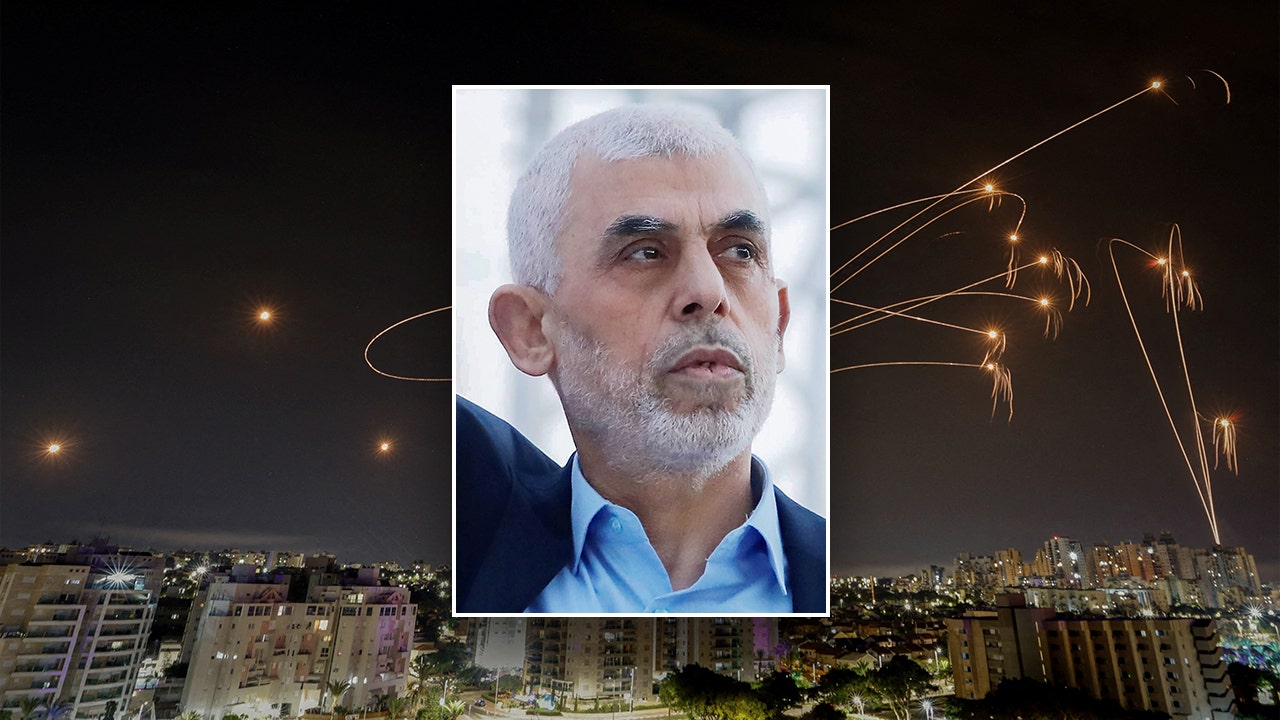
JERUSALEM – The terrorist mastermind behind Hamas’ massacre of nearly 1,200 people, including over 30 Americans, is believed to be using hostages as human shields to hold off Israeli soldiers seeking to capture him in a tunnel deep below Gaza.
The shocking information about Hamas kingpin Yahya Sinwar was revealed by Gen. Jack Keane, FOX News Channel senior strategic analyst and former U.S. army vice chief of staff, in an interview with Sky News Australia on Thursday.
Hamas terrorist leader Yahya Sinwar speaks to a crowd. (Majdi Fathi/NurPhoto via Getty Images)
“My sources tell me that Sinwar, who is the number one leader in Gaza of the Hamas organization, has 15-20 hostages protecting him and his family,” Keane said. “That’s why they have these hostages, to guarantee their survival. Israel is absolutely right in putting military pressure on them to force the release of the hostages.”
Keane’s revelation coincides with statements by Israel’s national security adviser, Tzachi Hanegbi, in an interview with Israeli news outlet Channel 12 on Saturday that Israel Defense Forces (IDF) nearly killed Sinwar. Hanegbi said Sinwar “is living on borrowed time,” and that “he won’t emerge alive from this confrontation.”
Israel is offering a $400,000 bounty for the capture of Sinwar. In December, Israel dropped leaflets on Gaza offering rewards for information about the location of Hamas’ top leadership.
Hanegbi said the IDF was close to killing Sinwar over the last few months. “It is apparently hard for [Sinwar] to make a decision [regarding a hostage agreement] that is likely to mean the end of Hamas rule,” noted Hanegbi, who added that “because the minute he gives up on the highly significant card for his survival, our hostages, it’s not easy for him, and that’s why things are delayed.”
UN, HUMAN RIGHTS, MEDIA GROUPS RELY ON HAMAS DEATH TOLL IN ‘SYSTEMATIC DECEPTION’: EXPERT
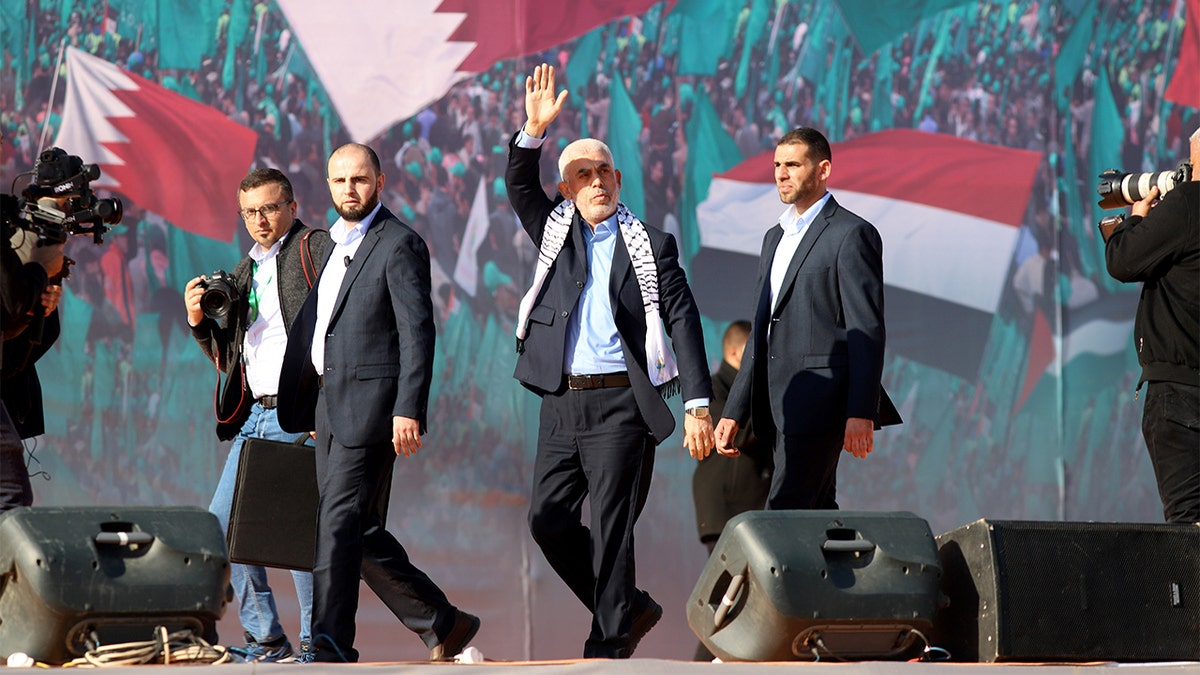
Terrorist leader Yahya Sinwar waves during a rally. (Rizek Abdeljawad/Xinhua via Getty Images)
The citizenship composition of the hostages being used by Sinwar – in violation of international humanitarian law – is unclear. Five Americans are believed to be among the more than 100 hostages held by Hamas.
Hamas invaded Israel on Oct. 7, 2023, and as part of its slaughter of roughly 1,200 people, the terrorist group took over 200 hostages into Gaza. A November hostage deal secured the freedom of more than 100 hostages, mostly women and children, in exchange for Israel’s release of dozens of Palestinian terrorists.
Israel’s Prime Minister Benjamin Netanyahu has announced a military operation into Rafah – the last major city controlled by Hamas and where Sinwar is believed be hiding with his hostages. Israel’s security objective is also to destroy the tunnels between Egypt and Rafah that enable Hamas to smuggle in weapons.
WORLD HEALTH ORGANIZATION SILENT OVER HAMAS’ USE OF GAZA HOSPITAL AS TERROR HQ
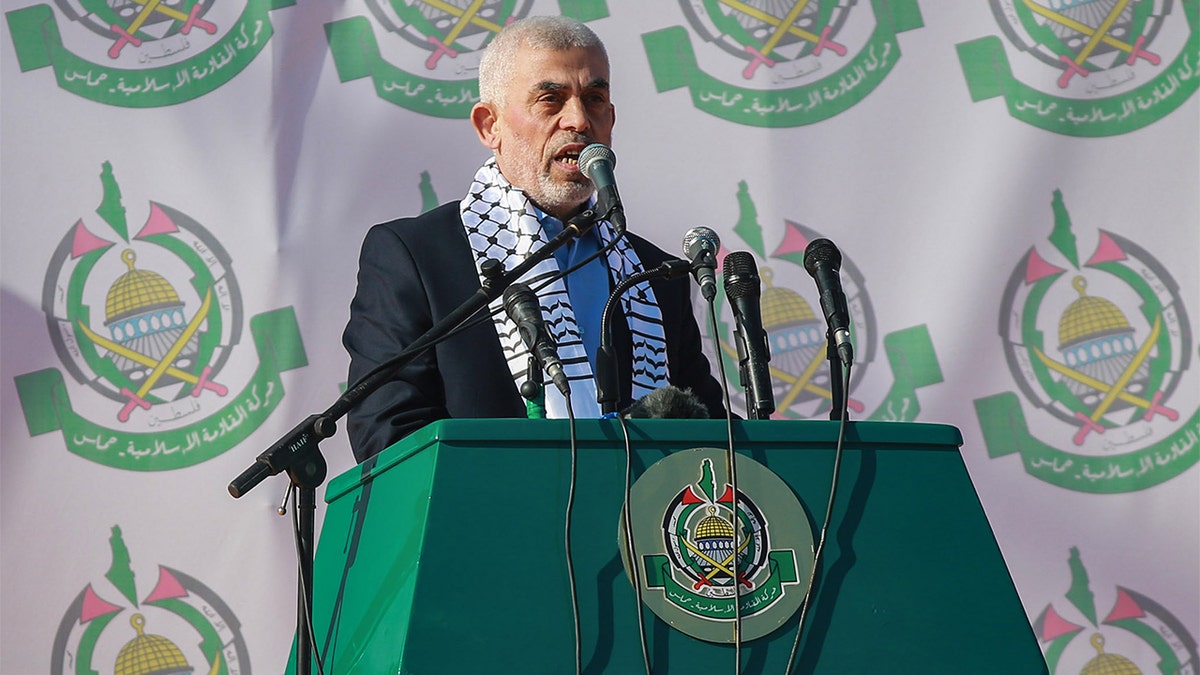
Israel is offering a $400,000 bounty for the capture of Yahya Sinwar. (Mohammed Talatene/picture alliance via Getty Images)
The Biden administration has thus far opposed Israel’s war plan to defeat Hamas in Rafah because of concerns of civilian deaths.
Hamas retains four battalions in Rafah coupled with thousands of terrorist fighters. While the Rafah operation looms, complex negotiations are unfolding in Cairo and may slow the pace of Israel’s efforts to root out Hamas terrorists in the city populated with more than a million Palestinians.
David Wurmser, a former senior adviser for nonproliferation and Middle East strategy for former Vice President Dick Cheney, said about Sinwar’s use of hostages that “the holding of hostages – since he values their lives nil – is nothing more than, say, a soldier taking cover behind a tree or rock when under heavy fire. It is not cowardice, but an intelligent and primordial impulse. He has no more empathy for a hostage than a soldier does for the rock. Indeed, the same with the ‘innocent’ Palestinian civilians.”
UN, HUMAN RIGHTS, MEDIA GROUPS RELY ON HAMAS DEATH TOLL IN ‘SYSTEMATIC DECEPTION’: EXPERT
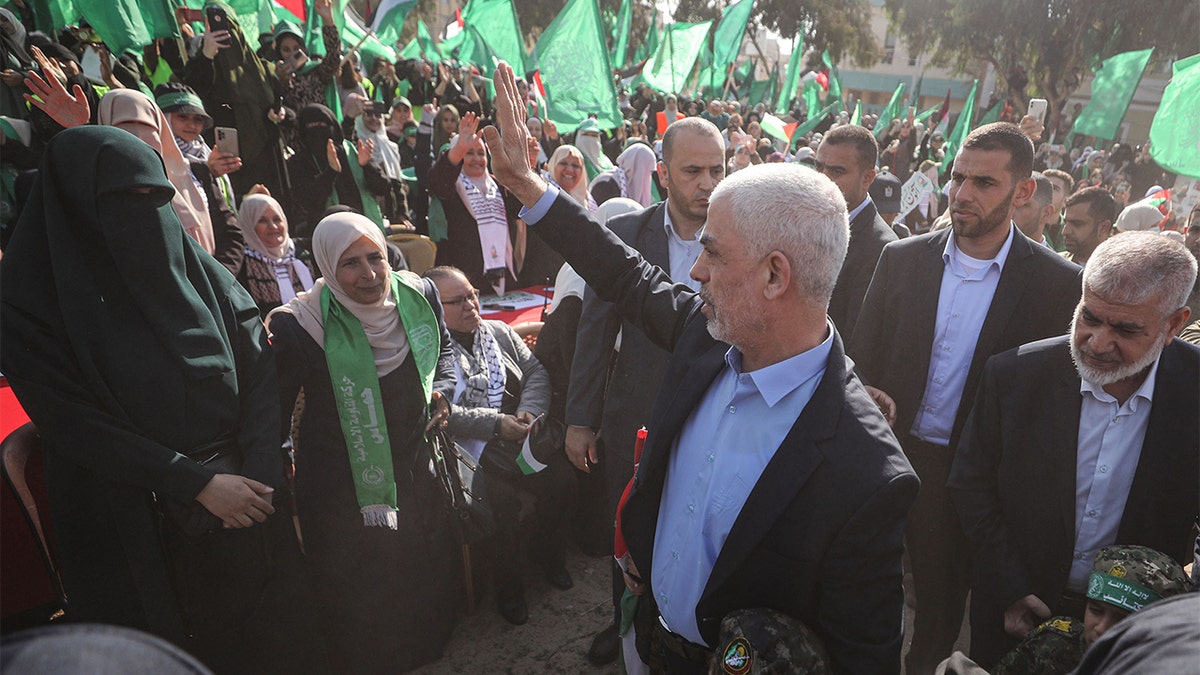
An Israeli official said the IDF was close to killing Sinwar over the last few months. (Mustafa Hassona/Anadolu Agency via Getty Images)
“All is part of a very sober and rational strategy. And given the amount he has taken control of Israeli and U.S. policy with hostages and human shields, it’s a very rational strategy,” Wurmser added. “We consider it cruel – but that requires empathy, which he is devoid of, and immoral, but that implies that advancing Islam at all costs is the ultimate morality and the filter for determining whether an action is moral or not.”
Yaakov Katz, a senior fellow at the Jewish People Policy Institute who was a former editor-in-chief of the Jerusalem Post, where he remains a columnist, told Fox News Digital that Sinwar is crafty and ruthless.
“Sinwar has played Israel very smartly since Oct. 7, sometimes seeming as if he understands Israel better than Israel understands itself. He has used the hostages effectively to achieve his goals and has managed to keep himself always a step ahead of the IDF in its efforts to capture or kill him.”
World
Gaza ceasefire talks at crucial stage as Hamas delegation leaves Cairo

Negotiations over a potential ceasefire in the Gaza war have entered a crucial stage as Hamas reiterated its demand for an end to Israel’s assault on the Palestinian territory in exchange for the release of captives and Israeli Prime Minister Benjamin Netanyahu flatly ruled out such an outcome.
On Sunday, the two sides blamed each other for the impasse. In their second day of talks with Egyptian and Qatari mediators, Hamas negotiators maintained their stance that any ceasefire agreement must include an end to the war, Palestinian officials said.
Israeli officials did not travel to Cairo to take part in indirect diplomacy, but on Sunday, Netanyahu reiterated Israel’s aim since the start of the war nearly seven months ago: to disarm and dismantle Hamas.
He said Israel was willing to pause fighting in Gaza in order to secure the release of hostages still being held by Hamas, believed to number more than 100.
“But while Israel has shown willingness, Hamas remains entrenched in its extreme positions, first among them the demand to remove all our forces from the Gaza Strip, end the war, and leave Hamas in power,” Netanyahu said.
“Israel cannot accept that,” he said.
In a statement released shortly after Netanyahu’s, Hamas chief Ismail Haniyeh blamed Netanyahu for “the continuation of the aggression and the expansion of the circle of conflict, and sabotaging the efforts made through the mediators and various parties”.
A Hamas delegation at the Gaza truce negotiations in Cairo had departed and will return for more talks on Tuesday, Egyptian state-linked media said.
“The Hamas delegation has left Cairo this evening [Sunday] for Doha in order to conduct consultations, and will return Tuesday to conclude the negotiations” towards a truce in the war with Israel, said Al-Qahera News, a site linked to Egyptian intelligence services, citing an unidentified “informed source”.
Reporting from Ramallah in the occupied West Bank, Al Jazeera’s Bernard Smith said that Israel has been insisting that any agreement would only include a pause in fighting rather than a permanent end to hostilities.
“From the Israelis, there’s an insistence that the most Hamas is going to get is this initial 40-day truce in exchange for 33 Israeli captives and the release of a large number of Palestinian prisoners,” he said.
“From Hamas, there’s an insistence that any agreement with Israel should lead to an end to the war and the withdrawal of Israeli forces from Gaza,” Smith added.
Meanwhile, CIA Director William Burns – who had been in Cairo – is also travelling to Doha to hold an emergency meeting with Qatar’s prime minister, an official briefed on the talks said late on Sunday.
“Burns is on his way to Doha for an emergency meeting with the Qatari prime minister aimed at exerting maximum pressure on Israel and Hamas to continue negotiating,” a source told Reuters.
Washington has pressed Hamas to accept the latest Israeli proposal.
Rafah assault
The talks come amid signs that Israel is preparing for an assault on Rafah in southern Gaza, where more than a million displaced Palestinians have taken refuge.
Israel believes thousands of Hamas fighters are holed up in the city, along with potentially dozens of captives.
Such an incursion would put hundreds of thousands of lives at risk and be a huge blow to the aid operations of the entire enclave, the United Nations Office for the Coordination of Humanitarian Affairs said on Friday.
Residents and health officials in Gaza said Israeli planes and tanks continued to pound areas across the Palestinian enclave overnight, killing and wounding several people.
Hamas’s armed wing claimed responsibility for an attack on Sunday near the Karem Abu Salem crossing between Israel and Gaza, the main entry point for humanitarian aid access into Gaza. Israel’s military said the crossing – known to Israelis as Kerem Shalom – was closed in the wake of the rocket attack.
At least 34,683 people, mostly women and children, have been killed and 78,018 wounded in Israel’s war on Gaza since October, according to Palestinian authorities.
Israel launched the assault after Hamas led an attack on southern Israel on October 7, killing at least 1,139 people, according to an Al Jazeera tally based on Israeli statistics.
-

 World1 week ago
World1 week agoEU Parliament leaders recall term's highs and lows at last sitting
-

 Politics1 week ago
Politics1 week agoGOP lawmakers demand major donors pull funding from Columbia over 'antisemitic incidents'
-

 World1 week ago
World1 week agoHamas ‘serious’ about captives’ release but not without Gaza ceasefire
-
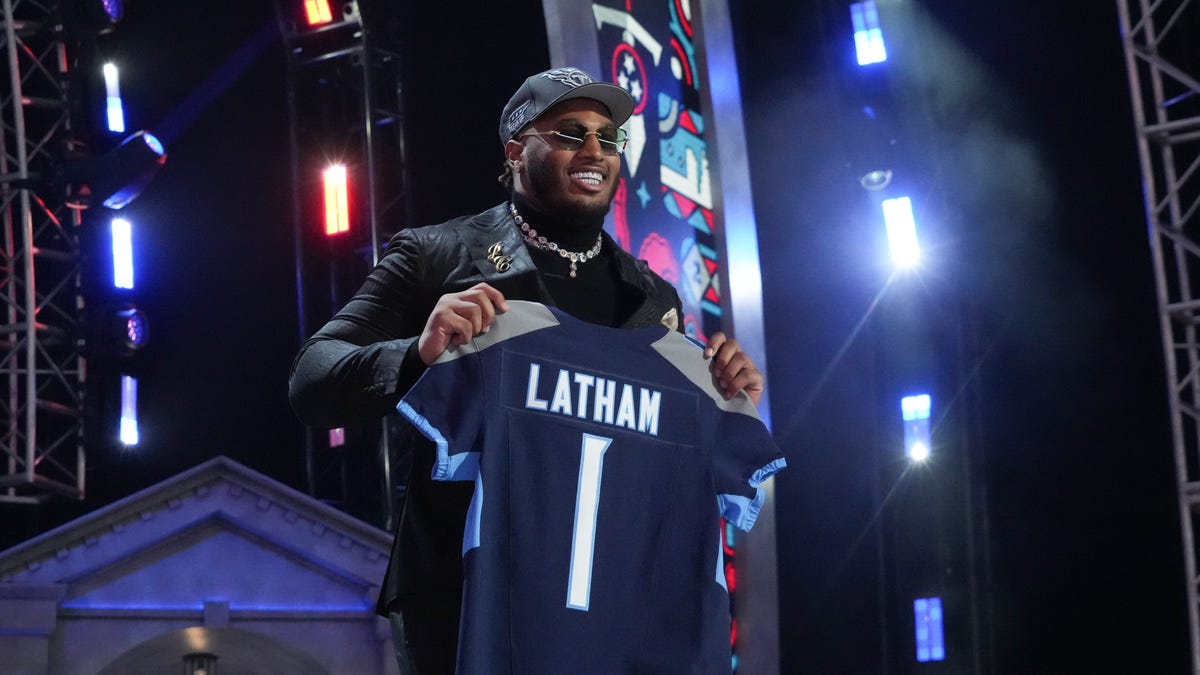
 Tennessee1 week ago
Tennessee1 week agoHow to buy JC Latham’s Tennessee Titans jersey after 2024 NFL Draft selection
-

 Politics1 week ago
Politics1 week agoColumbia University’s policy-making senate votes for resolution calling to investigate school’s leadership
-

 Politics6 days ago
Politics6 days agoHouse Republicans brace for spring legislative sprint with one less GOP vote
-
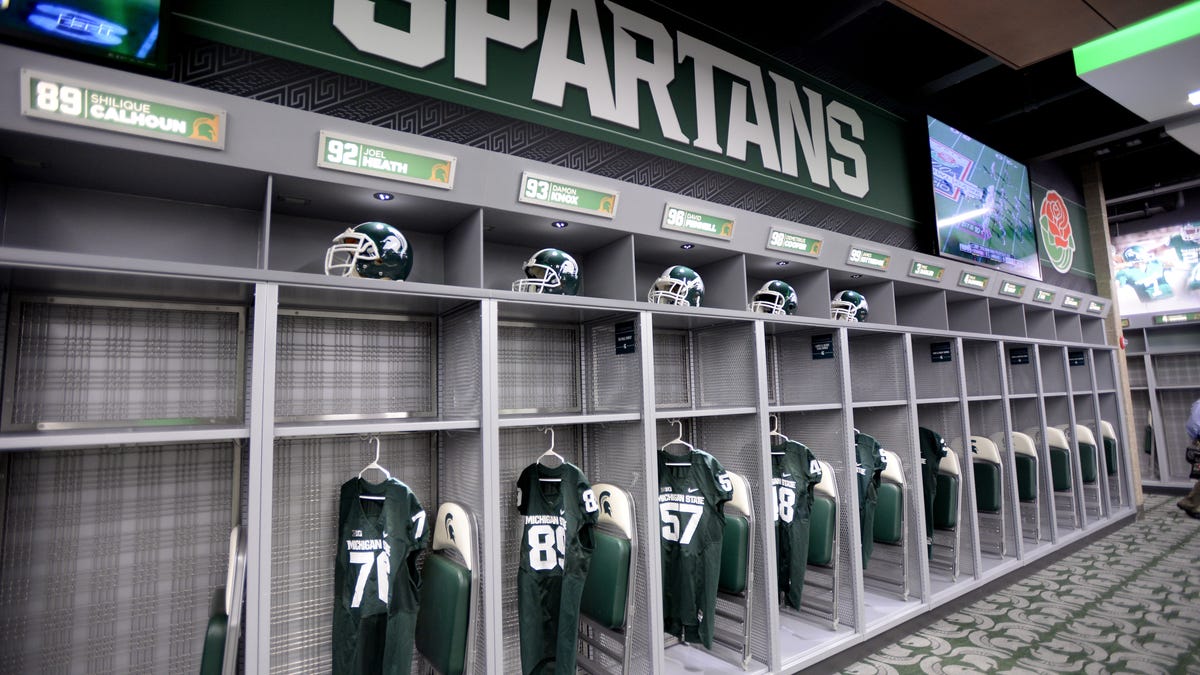
 Michigan1 week ago
Michigan1 week agoMichigan State football adds DT Brandon Lane from Stephen F. Austin
-

 News1 week ago
News1 week agoBoth sides prepare as Florida's six-week abortion ban is set to take effect Wednesday

/cdn.vox-cdn.com/uploads/chorus_asset/file/23951502/VRG_Illo_STK172_L_Normand_JackDorsey_Neutral.jpg)









